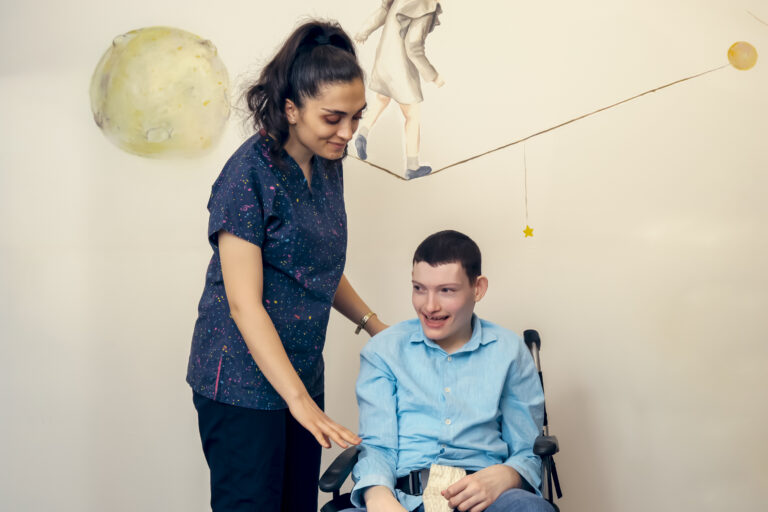Angelman syndrome is a neurodevelopmental disorder that usually affects the central nervous system. The syndrome is usually recognized by some characteristic symptoms and can often involve orthopedic problems. Here is a comprehensive overview of the relationship between Angelman syndrome and orthopedics:
What is Angelman Syndrome?
Angelman syndrome is usually caused by a genetic change on chromosome 15. This change is caused by a deficiency or inactivation of the UBE3A gene. It usually has a marked effect on the child’s development and brain function. It can be characterized by symptoms such as delays in the development of motor skills, speech difficulties, characteristic facial features and a generally happy and smiling personality.
Angelman syndrome is a rare disorder and occurs in approximately one in 10,000 to 20,000 births.
What are the Symptoms of Angelman Syndrome?
Symptoms of Angelman syndrome typically include limited or absent speech, balance problems, difficulties with movement coordination, a commonly smiling face and hyperactivity. Changes in sleep patterns and behaviors such as frequent clapping and hand waving may also be common.
How Can Families Recognize?
Families may notice signs of Angelman syndrome in their children, usually in infancy or early childhood. Symptoms such as developmental delays, atypical behaviors and lagging motor skills may encourage families to consult their health care provider.
Are There Types of Angelman Syndrome?
Angelman syndrome can have different genetic subtypes, but the symptoms are often similar. Differences between genetic subtypes can affect diagnosis and treatment approaches.
Angelman Syndrome Treatment
There is no specific treatment for Angelman syndrome, but supportive treatments are available to address symptoms. Physiotherapy, speech therapy, behavioral therapy and medications can help manage symptoms. In addition, education and special education programs are also important to support the child’s development.
Do I Need Supportive Devices, Therapy?
In some cases, supportive devices may be needed when children live with Angelman syndrome. For example, walking aids, special chairs or communication devices may be used. In addition, therapies such as physiotherapy and speech therapy can also help manage symptoms and improve the child’s quality of life.
In Which Situations and When Is Surgery Performed
In Angelman syndrome, surgery may often be needed to manage symptomatic orthopedic problems. For example, spinal curvature conditions such as scoliosis may require surgical intervention. However, surgical decisions are usually made based on the severity and impact of individual symptoms.
What you need to know about Angelman Syndrome
Angelman syndrome is a lifelong condition and treatment usually involves symptom management. Families can improve their child’s quality of life with early diagnosis, individualized care plans and supportive services. Orthopedic problems are also common, so regular medical check-ups and appropriate treatment approaches are important.


